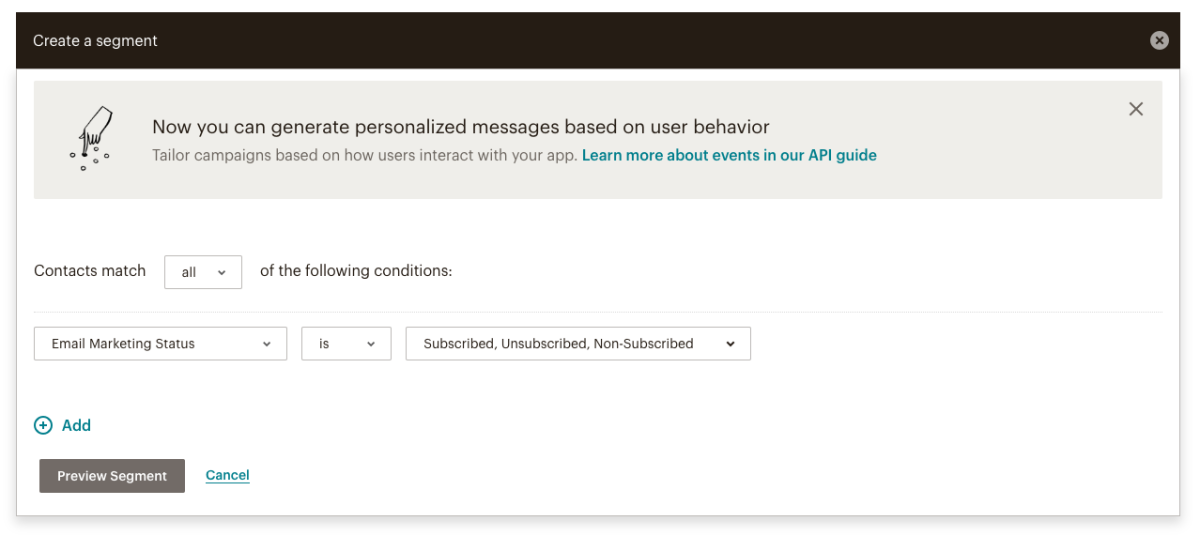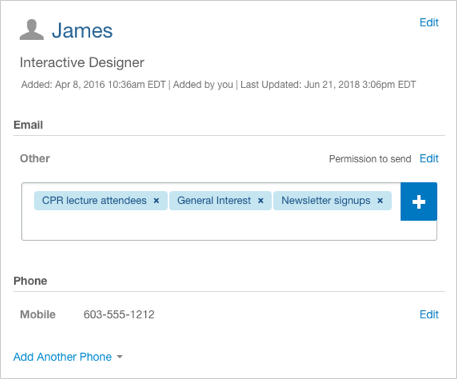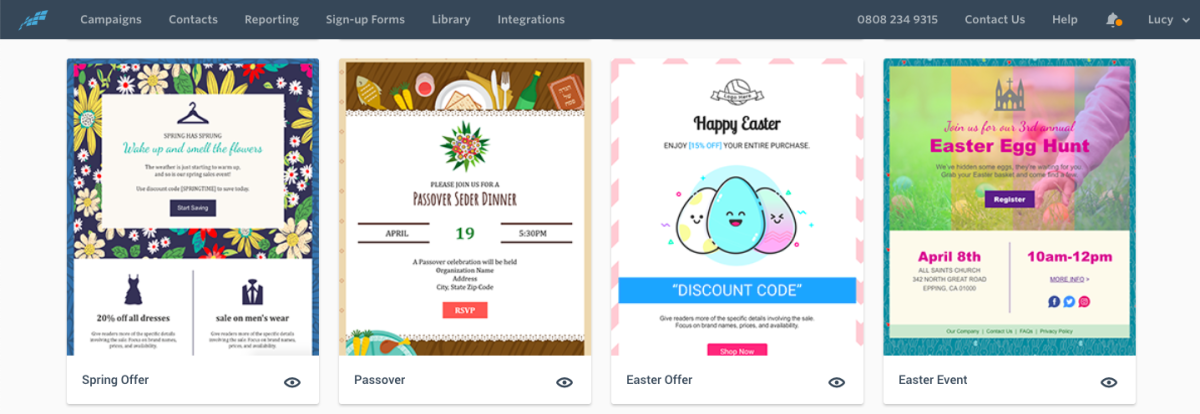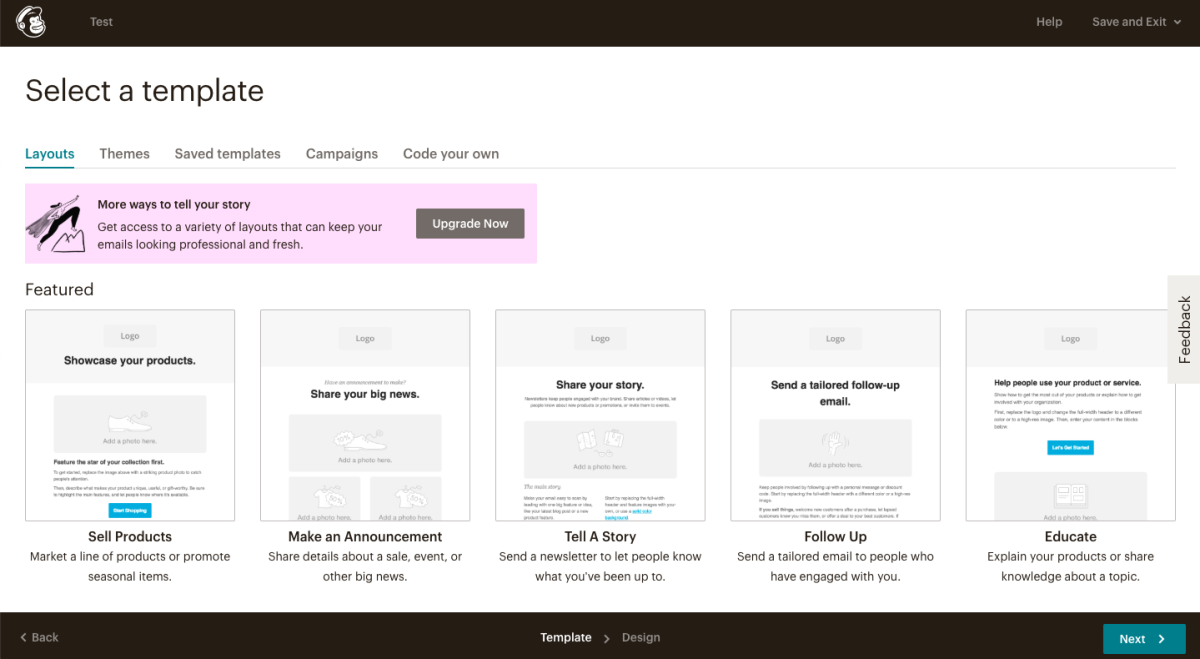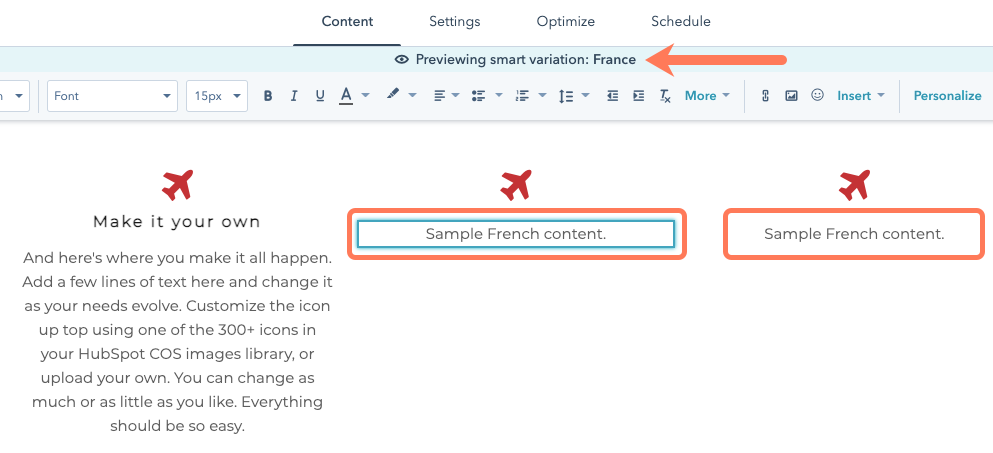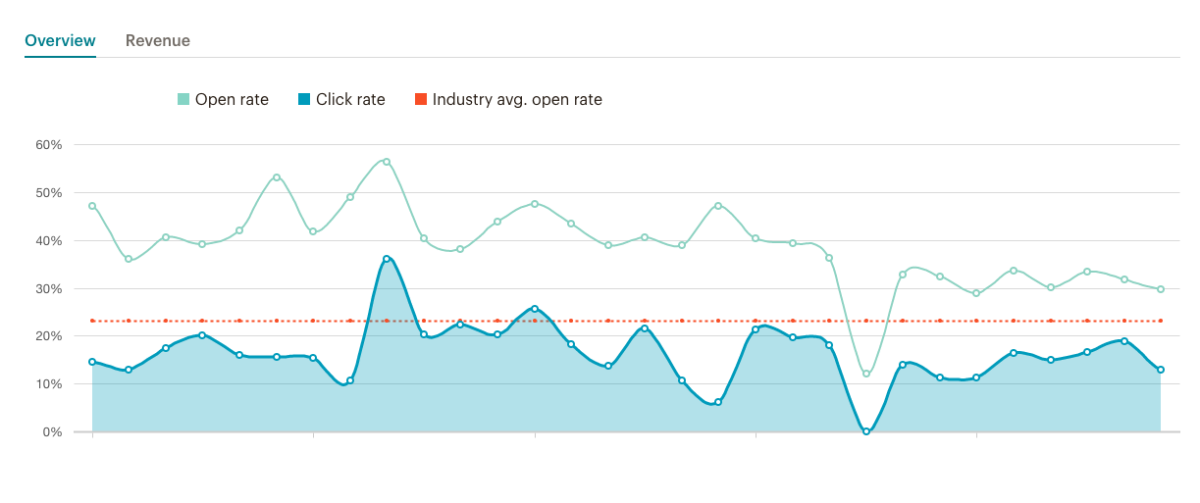Mailchimp’s pricing page advertises “Tools for pros. Prices for everyone.” Mailchimp’s most popular plan is their Free plan, which allows you to store up to 2,000 subscribers and send 12,000 emails per month.
Constant Contact, on the other hand, doesn’t have a free plan. It does have a 30-day free trial, but that’s not a long-term solution for your business – your minimum monthly spend afterward will be $20/month.
When comparing the basic plans of Mailchimp and Constant Contact, Mailchimp wins on every metric other than the number of emails you can send per month (12,000 versus no limit with Constant Contact).
While you can get started with the Mailchimp Free plan, you’ll eventually need to upgrade to the Essentials plan (from $9.99/month) if you have more than 2,000 subscribers on your list or you want to remove Mailchimp branding from your emails. You can also optimize your send time, deliver by time zone, get insights into audience demographics, and access email and chat support.

Mailchimp starts getting expensive as your list gets bigger, especially if you need premium support, advanced segmentation and multivariate testing. These features are all gated behind their Pro plan, starting at $199/month based on your list size.
To access all of Constant Contact’s features with the Email Plus plan, you’ll be paying upwards of $45/month depending on your list size. If you have 2,000 contacts, you’re looking at $70/month.

Pricing comparison of Mailchimp vs Constant Contact per number of contacts (paid monthly)
| |
Constant Contact pricing |
Mailchimp pricing |
| For 0-500 contacts |
$20/mo |
Free |
| For 501-2,000 contacts |
$45/mo |
Free |
| For 2,001-5,000 contacts |
$45 - $65/mo |
$29.99 - $49.99/mo |
| For 5,001-10,000 contacts |
$95/mo |
$49.99 - $74.99/mo |
| For 10,001-25,000 contacts |
$195 - $225/mo |
$74.99 - $189/mo |
| For 25,000 + contacts |
From $295/mo |
From $189/mo |
The verdict on Mailchimp vs. Constant Contact for value for money: Mailchimp.
